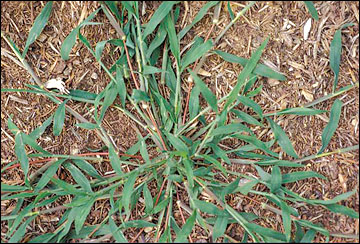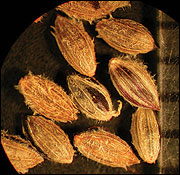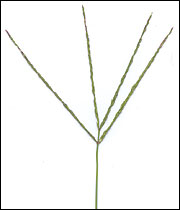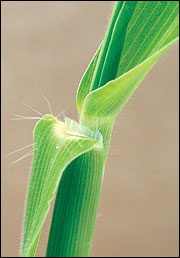Crab grass
- Digitaria spp.
Grass
Crab grass is generally less than 18 inches tall, allowing bobwhites to eat seeds right off the plant. Growth form may be upright or prostrate.
©Ted Bodner, USDA-NRCS Plants Database
Kevin Bradley, University of Missouri
Description
This group of annual grasses is common in disturbed areas throughout much of the Midwest. Native to Europe, they are most often perceived as weeds in fields and pastures. Crab grass generally grows no more than 2 feet tall. Seed stalks spread from a central point, much like the fingers on a hand.
Use by bobwhites
Often found in disturbed areas, crab grass tends to indicate early successional vegetation, and thus good quail habitat. Note, however, that late spring disturbance may result in a crab grass response heavy enough to displace other beneficial or desired plants. Bobwhites commonly consume crab grass seeds.






